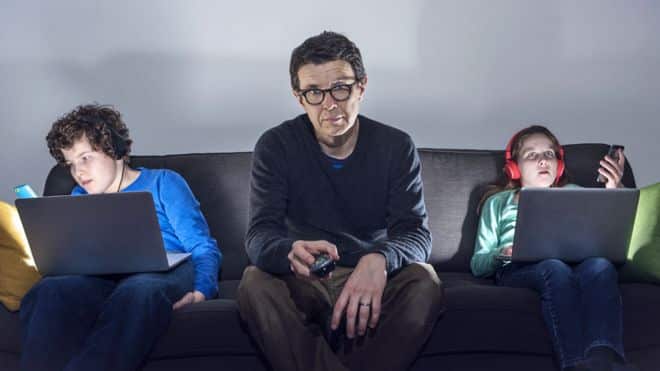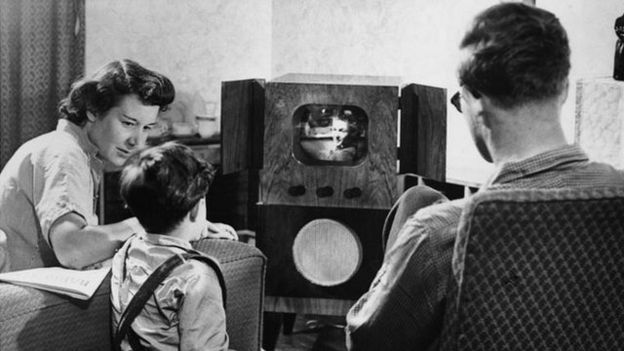The end of watching television as a family
television
It would be difficult to overstate the influence.
Television once had an impact on family life.

It would be hard to overstate the influence television once had on family life.
Even if he hated the programs, he still watched them. It was always there in the background.
It was where people came together, a shared experience in families and a shared experience in all communities.
But that world is disappearing.
Childwise's annual report on how children consume media shows a tipping point away from watching programs together.
For the first time, children aged five to 16 are more likely to watch programs and videos on devices such as laptops and cell phones, rather than television screens.

It means that watching television within families is becoming a private, individual and solitary activity.
Wear headphones in the bedroom instead of together in front of the box.
It's Netflix on mobile instead of a Sunday afternoon TV movie. Homes are places where people are alone together.
"TVs have been the focal point in many homes for many years, but they are losing popularity with children," said Childwise research director Simon Leggett.
Binge watching
It is not that young people have stopped watching programs and videos.
The monitoring survey shows that viewing has increased slightly this year to an average of more than two and a half hours per day.
But increasingly it is no longer in the public space of the living room, and often it is the repetitive "blurred vision" of favorite programs.

The researchers found that half of the children and adolescents preferred to watch back-to-back episodes, so two and a half hours of viewing could be for a single program.
The idea of waiting for a program is disappearing. The idea of a TV channel with a fixed schedule seems as clunky as a VHS player. Families are less and less likely to meet around the television.
Such a shared vision is so last century.
None of this will seem particularly surprising to parents, who will have seen their children regress into their own digital worlds.
But it does mean that the shape of family life is changing.
Programs you loved to hate
People will no longer argue about what to watch and then complain about their parents' decisions.
And it is increasingly difficult for parents to monitor their children's vision. Now it's a motherless watch.
 Copyright imageGETTY IMAGES
Copyright imageGETTY IMAGESFamily TV will no longer be like the old days of Top of the Pops, watching a bunch of dross to see a band you liked.
Teenagers in the seventies, eighties and nineties were able to define themselves as much by what they despised on television as by what they liked. You must have a common culture before you can fight it.
It is also a shift that follows the trend toward polarization and social media echo chambers.
Look at a lot of something you know you like. You never look at things you are likely to disagree with.
The feedback loops of online algorithms serve even more of the same, dicing and slicing and dicing and targeting the audience in fragments that favor advertising.
It's almost the exact opposite of Lord Reith's idea that public service broadcasting should be about giving people things they don't yet know they will like.
It is also a further step towards the reduction of the public domain. Communal places such as post offices, bank branches, corner stores and bars have disappeared from many neighborhoods.
Television, as a shared place for families, is being pushed to the corner.

Write us a comment: